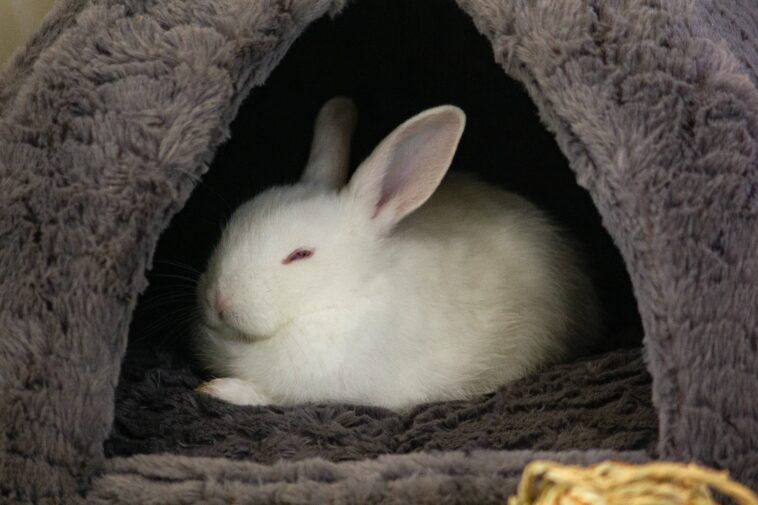As a rabbit owner, providing your furry friend with a comfortable and safe living space is important. One of the key components of this is choosing the right bedding material. Menards wood pellets are a popular option for heating homes and powering stoves, but can they also be used as a suitable bedding material for rabbits?
While Menards wood pellets may seem like a convenient and cost-effective option for rabbit bedding, it’s important to consider their suitability for your pet’s needs. Rabbits are sensitive animals that require a bedding material that is absorbent, comfortable, and free from harmful chemicals or additives.
This article will explore the pros and cons of using Menards wood pellets as a rabbit bedding material and guide ensuring your rabbit’s living space is comfortable and safe.
What are Wood Pellets?
Wood pellets are small cylindrical pellets made from compressed sawdust or other wood waste materials, such as wood shavings, chips, or bark. They are typically used as a fuel source for heating homes and businesses, but they can also be used for other purposes, such as animal bedding, cooking, and smoking food.
According to Naturally Wood, wood pellets are primarily produced from the byproducts after logs are processed into lumber and other high-value wood products during the sawmilling process.
In addition, low-quality logs that were previously discarded and harvested residuals in the forest are increasingly being used as raw materials for wood pellets.
Wood pellets are considered a renewable energy source because they are made from waste materials that would otherwise be discarded. They are also environmentally friendly because they produce fewer greenhouse gas emissions than fossil fuels.
In animal bedding, wood pellets are popular because they are highly absorbent, low-dust, and odor-controlling. They are commonly used for small animals such as rabbits, hamsters, guinea pigs, and birds, as well as for larger animals such as horses and cows.
Advantages and Disadvantages of Using Menards Wood Pellets
Menards Wood Pellets offer a range of advantages but also present some challenges, which are as follows.
Advantages
- Absorbency: Wood pellets are very absorbent, which means they can quickly absorb moisture from rabbit urine and keep the bedding relatively dry.
- Odor control: Menards wood pellets can help control odors because they absorb moisture and the bacteria that cause odors.
- Cost-effective: Wood pellets are relatively inexpensive compared to other types of rabbit bedding, such as hay or paper-based bedding.
- Availability: Menards is a popular home improvement store, so it’s likely that wood pellets are readily available and easy to purchase.
Disadvantages
- Dust: Wood pellets can produce dust, which can be harmful to rabbits if they inhale it. It’s important to use a dust mask when handling wood pellets and ensure the rabbit’s living area is well-ventilated.
- Hardness: Wood pellets can be quite hard, which may not be comfortable for rabbits to walk on or sit on for long periods.
- Splinters: Some wood pellets may contain splinters or sharp edges, which can be dangerous for rabbits if they accidentally ingest them.
- Limited availability of softwood pellets: Some rabbits are sensitive to the aromatic compounds in softwood pellets, which can cause respiratory issues. Menards wood pellets are typically made from softwood, so they may not be the best option for rabbits with respiratory problems.
Potential Health Risks Associated with Using Menards Wood Pellets as Rabbit Bedding
While Menards wood pellets can be a good option for rabbit bedding, there are potential health risks to consider. Here are some of the main risks:
1. Chemical additives
Some Menards wood pellets may contain chemical additives that can harm rabbits if ingested or inhaled. These additives can include binders, glues, or other chemicals used in the manufacturing process. It’s important to choose pure wood pellets without any additives.
2. Dust
Menards wood pellets can be dusty, which can cause respiratory problems in rabbits. Dust particles can irritate the respiratory tract and lead to respiratory infections. It’s important to choose low-dust Menards wood pellets and monitor your rabbit’s breathing and behavior.
3. Allergies
Some rabbits may have allergies or sensitivities to the type of wood used in the pellets. Observing your rabbit for any signs of allergic reactions, such as itching or skin irritation, is important.
4. Ingestion
Rabbits may accidentally ingest wood pellets while grooming or eating. This can lead to gastrointestinal problems if the pellets form blockages in the digestive system. It’s important to monitor your rabbit’s behavior and remove any pellets that may be accidentally ingested.
Cleaning and Maintenance of Menards Wood Pellet
Cleaning and maintaining Menards wood pellet bedding for rabbits is important for the health and well-being of your furry friend. Here are some steps you can follow:
1. Spot cleaning
Remove any soiled or wet spots in the bedding daily. This will prevent the buildup of bacteria and unpleasant odors.
2. Regular cleaning
Once a week, remove all the bedding from the rabbit’s enclosure and replace it with fresh bedding. Clean the enclosure with a pet-safe cleaner and dry it thoroughly before adding new bedding.
3. Dust control
Menards wood pellet bedding can create dust when disturbed, which can harm your rabbit’s respiratory system. Use a dust mask when handling the bedding and avoid shaking it to minimize the amount of dust.
4. Odor control
Add baking soda or activated charcoal to the bedding to absorb the smell if you notice a strong odor.
Tips for Introducing Menards Wood Pellets
Introducing Menards wood pellets as rabbit bedding can be a gradual process to help your rabbit adjust to the new material. Here are some tips to consider:
1. Gradual transition
Start by mixing a small amount of Menards wood pellets into your rabbit’s existing bedding. Gradually increase the pellets over several days until your rabbit fully transitions to the new bedding.
2. Monitor your rabbit
Watch your rabbit closely during the transition to ensure they adjust well to the new bedding. Observe their behavior, appetite, and bathroom habits to ensure they are comfortable and not experiencing health issues.
3. Provide additional hay
Menards wood pellets may be less comfortable than softer bedding materials like hay or straw. Providing additional hay can help your rabbit feel more comfortable and provide a source of enrichment.
4. Ensure cleanliness
Menards wood pellets can be highly absorbent, but changing the bedding regularly is important to prevent odor buildup and maintain a hygienic living environment for your rabbit.
5. Offer treats and positive reinforcement.
Introducing new bedding can be stressful for rabbits, so offering treats and positive reinforcement can help make the transition smoother and more enjoyable for your rabbit.
Remember to consult with your veterinarian if you have any concerns about your rabbit’s health or behavior during the bedding transition process.
Key Takeaways
- Wood pellets are small cylindrical pellets made from compressed sawdust or wood waste materials, such as wood shavings, chips, or bark.
- The advantages of using Menards wood pellets include absorbency, odor control, cost-effectiveness, and availability.
- Disadvantages of using Menards wood pellets include dust, hardness, splinters, and limited availability of softwood pellets.
- Look for pure wood pellets, check the packaging, consider the pellet size, check for dust, and consider your rabbit’s preferences. Considering these factors, you can choose Menards wood pellets for your rabbit’s bedding to keep them comfortable and healthy.
- Potential health risks associated with using menards wood pellets as rabbit bedding includes chemical additives, dust, allergies, and ingestion.
- Cleaning maintenance of Menard wood pellets as well as the tips for introducing it as rabbit bedding is also discussed in this article.


